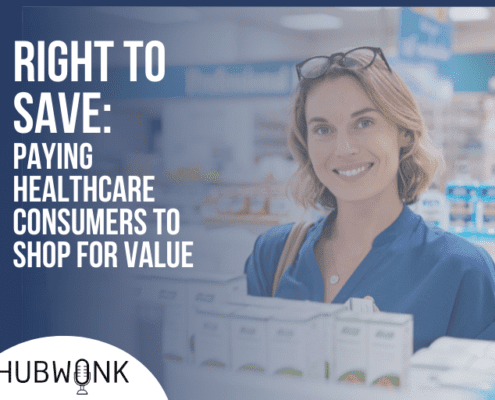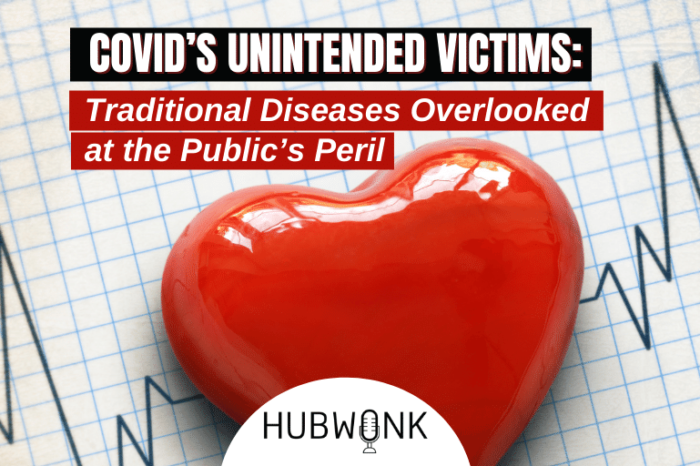COVID’s Unintended Victims: Traditional Diseases Overlooked at the Public’s Peril
/in COVID Health, COVID Life Sciences, COVID Podcasts, Featured, Healthcare, News, Podcast Hubwonk, rCOVID /by Editorial Staff
This week on Hubwonk, host Joe Selvaggi talks with Pioneer Institute’s Visiting Fellow in Life Sciences, Dr. Bill Smith, about his newest research paper, “An “Impending Tsunami” in Mortality from Traditional Diseases,” which sounds the alarm that the public health community’s focus on COVID-19 has caused many to avoid seeking medical attention for other illnesses. As a result, more Americans are dying from fear of COVID than from the disease itself.
Guest:
 William S. Smith is Visiting Fellow in Life Sciences at Pioneer Institute. He has 25 years of experience in government and in corporate roles, including as vice president of public affairs and policy at Pfizer, and as a consultant to major pharmaceutical, biotechnology and medical device companies. He held senior staff positions for the Republican House leadership on Capitol Hill, the White House, and in the Massachusetts Governor’s office. He is affiliated as research fellow and managing director with the Center for the Study of Statesmanship at The Catholic University of America (CUA), where he earned his PhD.
William S. Smith is Visiting Fellow in Life Sciences at Pioneer Institute. He has 25 years of experience in government and in corporate roles, including as vice president of public affairs and policy at Pfizer, and as a consultant to major pharmaceutical, biotechnology and medical device companies. He held senior staff positions for the Republican House leadership on Capitol Hill, the White House, and in the Massachusetts Governor’s office. He is affiliated as research fellow and managing director with the Center for the Study of Statesmanship at The Catholic University of America (CUA), where he earned his PhD.
WATCH:
Get new episodes of Hubwonk in your inbox!
Read a Transcript of This Episode
Please excuse typos.
Joe Selvaggi:
This is Hubwonk, I’m Joe Selvaggi
Joe Selvaggi:
Welcome to Hubwonk, a podcast of Pioneer Institute, a think tank in Boston for nearly two years. Fear of COVID-19 has eclipsed the public health attention to other diseases that afflict and kill far more people than the COVID-19 virus while the public has isolated masks and taking more than 7 billion COVID vaccines globally, traditional threats to life from cancer, diabetes, and heart disease have not gone away. Unfortunately, since the outbreak in early 2020 many individuals, fear of COVID have led the, to avoid doctor visits, screenings, and treatment that could identify and treat their disease, this neglect of other lethal, but treatable conditions may already be leading to more Americans to die from fear of COVID. Then we’ll die from COVID itself. How can public health officials correct course from a message that is discouraged all discretionary treatment during the initial phase of the pandemic to one that sounds a loud alarm that we must return our attention to detection and treatment of traditional and far more deadly threats to human health. I guess today’s Dr. Bill Smith visiting life science fellow at Pioneer Institute in his new research piece entitled an impending tsunami in mortality from traditional diseases. Dr. Smith makes the case that our complete focus on COVID-19 has averted the public health attention away from more lethal conditions, such as cancer and heart disease. This lack of attention for other treatable, deadly diseases, coupled with the fear engendered by COVID-19 may well result in more deaths attributable to fear of COVID then to the disease itself. When I return I’ll be joined by Pioneer Institute’s Dr. Bill Smith.
Joe Selvaggi:
Okay. We’re back. This is Hubwonk. I’m Joe Selvaggi, and I’m now joined by a visiting fellow in life sciences at Pioneer Institute, and a good friend of the Hubwonk podcast Dr. Bill Smith. Welcome back to the show, Bill. Thank you, Joe. Glad to be here. I want to talk to you or with you about the newest research piece that you just released entitled and impending tsunami in mortality from traditional diseases and implications for public health. It really struck me hard and it gave me a lot to think about let’s start at the beginning for the benefit of our listeners with some background. I’ll just throw in that we’re now approaching the second year of of COVID since it was first discovered in, in China and 2019, hence COVID-19 the diseases reached every part of the world.
Joe Selvaggi:
We know now we have new strains that COVID the Delta Varian, which are both more contagious and more deadly. And you know, these are, this is the bad news. The good news is that we’ve got some effective, safe vaccines and therapies. In fact an earlier episode of have Wonka, we featured the fact that we hope to be approaching zero COVID deaths very, very soon. So this is where we begin. Your paper starts out with some background on how deadly COVID is and compares to some of the diseases mankind has experienced in the past. Let’s start at the very beginning how, how bad and how deadly is COVID compared to other things mankind has encountered?
Dr. Bill Smith:
Well, it’s not as deadly as HIV. It’s not as deadly, probably as the S the Spanish flu and maybe that’s due to therapeutics and vaccines. But it’s even not as deadly as some of our current traditional diseases. So COVID is now probably the number two or three killer in the country. And there was a point in January and February where it was the number one killer, but there was also a point when it was the number seven killer. So it’s a dangerous disease. What I’m not saying in this paper is that we should ignore COVID. But what I’m saying in this paper is that it’s, it’s not the number one killer, and I think public health authorities. I want to take them to task a little bit because they’ve ignored the public health campaigns to have people go and get diagnostic tests for more traditional diseases. I focus on cardiovascular disease, but you could look at any disease, state cancer, mammograms, diabetes, A1C tests, there’s a whole bunch of diagnostic screenings that fell off the cliff during COVID.
Joe Selvaggi:
So I am going to unpack that one, one piece at a time, I guess, a Hublot might be part of that whole movement. Certainly we dedicated quite a few episodes to, to COVID and I, I would agree that COVID seems to have eclipsed all other health, public health issues definitely to the detriment of, of the public health. Where do you think we went? We, we lost our way, so we have, you know, in January, February we discovered this disease. It was rampant in, in China and Italy, and it ultimately arrived on our shores. I remember quite well when everything locked down in early March where you have to expect the public to be frightened and focused on something not well known, not a never before seen where, you know, if you were a public health person, where, where did we lose our way in the beginning?
Dr. Bill Smith:
I, I didn’t, I won’t even say and criticize public health officials in the beginning, because there was so much, there was such a lack of knowledge about how severe this disease was, how quickly it was going to spread and public have felt the health officials were groping around, understandably, trying to figure out how this, how, how deadly this disease was going to be. So I’m not going to criticize them for the, the 2020 period, but once we started getting vaccines and the rates of COVID started dropping, I really think public officials should have said very publicly, go back to the doctor, get your blood pressure, screened, get, get a mammogram, get, get your cholesterol tested. They should have made a conscious effort to say, you know what, it’s safe, relatively safe to go back to the doctor and people that are at risk for these traditional diseases gut should go in and get tested. And they did not do that. They continued talking about COVID non-stop
Joe Selvaggi:
Which in your paper you say creates a, a cultural fear again in the beginning. And certainly much of that is justified as you point out. But that fear does have a downside. You chose in your paper to feature a particular disease. We have many things that can kill us but you, you chose a CVD cardiovascular disease as the, perhaps the emblematic disease of all diseases to to make your point. What made you choose that disease?
Dr. Bill Smith:
Well, I, I knew from the beginning, you know, you know what I do for pioneer, I follow a biotech and pharma policy, and I’m getting a little out of my lane with this paper, but I felt like I had to, because I was, I subscribed to all these healthcare blogs and websites, and I’m constantly following media around healthcare. And I started to see these staggering stories. One of them that jumped out at me was a CDC study that said during COVID mammograms had fallen off the cliff by 87%, 87%, fewer mammograms. Exactly. And I started looking at all the data for our different disease states and, and I became overwhelmed because in virtually every disease area, people were not going to the doctor and getting the traditional tests. So I thought, I can’t write a paper of this size. It’s too big.
Dr. Bill Smith:
I have to narrow it down. And the logical the logical therapeutic area to focus on is cardiovascular disease, because it’s the number one killer. And it’s been the number one killer even during COVID. There were more far more cardiovascular deaths in 2020, and in 2021 than there were COVID deaths. And and I also, the D the data was also very alarming, you know, blood pressure screenings during COVID down 50% cholesterol screenings down 35% stress tests where you might pick up atrial fibrillation or other conditions were down 80%. I mean, the numbers were very concerning, and I thought, I should, I really should write about this
Joe Selvaggi:
Indeed. So all these tests that have helped keep us healthy fell off a cliff, and one have to assume people remain just as vulnerable, if not more vulnerable being in lockdown with COVID. So we just essentially turned off the light and for all these diseases one of your one of the things we did early on in, in hub walk is in the interest of helping people address their health issues, we promoted and encourage people to use the technology that, that we’re using right now. And this remote technology call it telemedicine, where you can get your doctor from the comfort of your living room and perhaps not have that non-zero risk of getting COVID well, taking a trip to the, to the doctor, your paper addresses that fact that telemedicine was a compliment, but perhaps maybe not the right path for, for everything and everyone. Yeah.
Dr. Bill Smith:
Pioneer has written a lot about tele-health and we’re very enthusiastic about it. We think it should be reimbursed. We think it should be above it. It should be easier to get in touch with your doctor. And tele-health is one way to do that. What I saw in the data concern me that concerned me was that in a telehealth visit during COVID, at least you are less likely, for example, to get a blood pressure screening, less likely to get a cholesterol screening, you might get to talk to your doctor about one thing that’s going on, but you wouldn’t get all the traditional tests. Like if you go, I, I, I broke a rib a couple of months ago. I had to go into the doctor and they, they did a blood pressure test, and they looked at a bunch of things that weren’t related to my ribbon any way. And you, you weren’t getting that. I don’t think you were getting that in telehealth visits. And, and that also has a health disparity angle because minority communities tended to use health tele-health visits more than others. I that’s surprising to me, but that was, that was what the data show. So I’m, I’m an enthusiastic supporter of, of telehealth, but I think there’s a quality issue that some tele-health is this need to be upgraded so that you’re actually getting the diagnostic tests that are, that are essential.
Joe Selvaggi:
Yes. And in addition to our a shows on tele telehealth, we did have a actual emergency room doctors who attested that laying of hands is, is, is vital. So we need to see a doctor in real life from time to time. But you also, in your paper measure you, you mentioned the falloff of mammograms. Let’s focus on the the tests that relate to heart disease. How, you know, let’s translate, let’s connect the dots. If I don’t go to my doctor or I don’t get a test share with me which tests or do I have gotten that I’m not getting, or that the public generally is not getting. And how does that translate to a death?
Dr. Bill Smith:
Well, I’m not a cardiologist, but I mean, I would think that blood pressure screenings are the number one thing that should happen. You’re, you’re going to develop heart disease and your heart’s going to muscle is going to suffer. If you’re you’re, you have chronic blood pressure, high blood pressure, that’s hypertension, that’s not being addressed. So I think that’s the number one. And that’s, you know, that may be something that could be done in a telehealth visit, but right now that’s not that common. So that’s the number one thing I think that was missing cholesterol screenings. Of course, if you’re at risk for atrial fibrillation, there’s a whole slew of tests that, that usually you have to go into your doctor to, to, to have a a stress test. There, there’s all sorts of things that that again, fell off a cliff during COVID and cardiomyopathy, a general weakening of the heart, same story there, echocardiograms and all sorts of tests that can be done in the office.
Dr. Bill Smith:
If you’re at high risk for some of these things and your heart muscle baby may be weakening, but a lot of those tests have to have to be done in the office. They can’t be done in a telehealth visit. Now we are seeing, and you probably see it on TV, that there are these devices where you can very selling them on Amazon. You put your two fingers on a device, and it tells you whether your heart is beating properly, and it might be able to diagnose atrial fibrillation. I’m very encouraged by those. I think they should be in great use. But some of them require you to go to your doctor and actually be taught how to use it and be connected to your doctor, not just, you know, take, take it for fun and see it on your phone. So I think the in-person visits should have been encouraged to a greater degree to see cardiologists if you’re an at risk patient or just a normal patient to just go in and get your BP and your and your cholesterol tested
Joe Selvaggi:
Now many of our listeners are thinking, okay, look, I should get these tests. I should see my doctor. But of course, you know, I should brush between meals and these all kinds of great ideas that a lot of people might issue for for convenience exit can’t get around to it. How would we be persuasive in measuring there’s a term we use as in many of the past episodes talking about COVID we talked about COVID deaths, but we talk about excess deaths due to COVID. And, and much of what you’re talking about, I believe is people who will die because they’ve not taken the proper care to go to their doctor. And that will not have been from COVID. Have you, or is your, your paper does attempt to quantify measure how many deaths that might be attributable to non COVID deaths, but that are COVID related owing to people not taking proper precautions with their care.
Dr. Bill Smith:
Yeah, agile. I think the answer is we don’t have good data on this and we should. So there was anecdotal data. For example, when my paper came out, the Boston Herald wrote a story about it, saying people weren’t getting the traditional screenings and the chief operating officer for mass general. One of the most important hospitals in the country went on record in that story and said, yes, we’re seeing anecdotal evidence that, that our emergency rooms are getting flooded with patients with non COVID conditions. So heart, heart problems and other problems. And so I think, I think there should be studies that should be done where, you know, researchers go into the emergency room and they say, okay, you’re, you’re, you’re having some heart pains, chest pains. When was the last time you got screened? And we start to try to figure out the hard data on how many people that are showing up now in large numbers are showing up in, in, in large part because they didn’t get screened for 18 or 20 months. That, that I think that would be very valuable data to have. And I think researchers should be out there looking at that.
Joe Selvaggi:
Certainly that seems like a useful tactic because well, heart, I think her problems present dramatically and quickly. I’m also thinking about all those diseases that take longer to kill us like a cancer that we won’t see. And if, again, if we were measuring for excess deaths from cancer from COVID, or those wouldn’t be measurable now, because you would not know that that lump would not be found for, for years perhaps where a visit to the doctor might’ve found it immediately.
Dr. Bill Smith:
Exactly. If you were six years from your last colonoscopy and COVID hit, you might be eight or nine years away from your colonoscopy, that that’s just not a good thing to happen.
Joe Selvaggi:
Right. And so you so have you been able to, in any way in, for, from, let’s say the data that we have you, you had some numbers in your paper talking about comparing the deaths from heart disease in 2020 versus 2021. Fortunately the rates of death from COVID is, are falling. We’ve got effective vaccines and therapies they’re falling fairly dramatically. Whereas heart disease is going in the other direction. At what point given that there’s so many more people dying from heart disease than are dying from COVID, at what point should it appear on the radar of the public health? In other words, when should the headline and the Kyron on CNN start talking about heart disease deaths instead of COVID?
Dr. Bill Smith:
I think it should have happened six months ago. I mean, that’s what I wrote in my paper that there should have been a public health campaign to encourage people to go back to their doctor and get some of these tests. And I would even, I would even recommend, again, we don’t know how ominous that the tsunami that I I warn about is going to be, but I would even recommend that we set up set up tent cities in like neighborhoods like we did for the COVID vaccine or COVID tests where people can go and get a blood pressure screening and a cholesterol screening easily, particularly in minority neighborhoods. Just we’re going to do this for free. We’re coming into your neighborhood. We’re setting up in the parking lot, come by and we’ll, we’ll screen your blood pressure. Those are the kinds of things that public health officials should be doing in, in large numbers.
Joe Selvaggi:
Well, we’re going to get to the, the, if you were king for a day recommendations, cause you had a few of those in your paper, and then towards the end, I just want to put a fine point on it at this point. I think you’re comfortable in asserting that, whereas COVID is a pretty bad a disease that killed a lot of people more than 750,000 Americans. So we don’t want to make light of that, but at this point in the process, the fear of COVID and that fear that, that keeps us from our doctor is far more lethal. And in fact, a far greater public health threat than COVID itself and therefore should be treated as it’s COVID related because the fear is COVID related, but it should be treated as dramatically and comprehensively as we treated the actual disease of COVID
Dr. Bill Smith:
That’s my view. I mean, COVID was the leading killer for maybe two months during this whole period. And cardiovascular disease was the one killer for most of the months during this period. And I just think public health officials should have had more context and said to people, look you’re most the overwhelming percentage of older Americans are vaccinated. You can go to the doctor and you can get tested. Now, go back. Now that that should have been happening when vaccination rates started to peak.
Joe Selvaggi:
So again, now we’ll get to the king for a day. There are many policy makers who listened to the show public health leaders maybe they knew it in the back of their mind. They said, okay, wait, you’re right. We’ve been you know, COVID turn up to 11 every day we’re we’re missing the forest for the trees here. If you were king for a day, what would you change? What would be some of the first things you would say?
Dr. Bill Smith:
Well, I made three, three recommendations in the paper. The first one I’ve already talked about a major public health campaign to encourage people to go back to their doctor and get these diagnostic tests that may be a TV campaign. It may be just public health officials talking about it when they get on TV and to talk about COVID. They also mentioned these other conditions and remind people to go back. So that that’s the first thing, a public public affairs campaign to remind people this, the second recommendation I make is make it easier for people to get medications. So you, you do finally go back to your doctor and they give you a prescription and suddenly you have a $200 co-insurance payment and you don’t fill your prescription. I just think for a year or two, we ought to have a reduction in copays and out-of-pocket costs so that people actually filled their medications and take them right away.
Dr. Bill Smith:
There was for example a number that I saw in one of these studies, a tour of a stat in which is the lipid lowering drug Lipitor, when it was branded it’s the most commonly prescribed drug in the country, a tour of a stat and prescriptions were down 9% during COVID. And if you think about the number of a tour bus Caton prescriptions in a year, it’s over a hundred million, which means that there are 10 million, fewer prescriptions for this lipid lowering drug, important drug being prescribed. And I just think we’ve got to get people back in and taking some of these cheap, generic medications for, for blood pressure or, or, or lipid lowering. And on the more expensive medications we ought to have lower out-of-pocket cost so people can actually afford them. So that was sort of my second recommendation to encourage people to get back on their meds if they haven’t gone to the doctor, or if they’re going to the doctor for the first time in a year, and they get diagnosed with something, they get encouraged to fill their prescriptions because we know when they show up at the pharmacy and they have a high out-of-pocket costs, a lot of people just walk away, they don’t fill their script.
Joe Selvaggi:
So are you comparing, I, or actually in your paper, you did indeed compare. You said, look, we we know these vaccines work. We know you need them but we’re gonna make the pot a little sweeter and make it free. So as to ensure the greatest uptake possible, you’re comparing other lethal or let’s say life-saving treatments to a vaccine, and you’re saying, let’s apply the same logic. They are to encourage the, you know, to avoid this tsunami of mortality. Let’s, let’s make those
Dr. Bill Smith:
Exactly, at least in a year or two. I mean, how many fewer vaccinations would we have had if they had to queue up first and pay a $20 copay before you went and got your vaccine? I think a lot of people would have just said, forget it. I’m not doing it. So I do think out of pocket costs are an important factor. There are many studies about it, and we should lower them for a couple of years to get people back on chronic medication. So that was my second recommendation. My third recommendation was for the federal government. There is a, I forget what the formal term is. There’s a health preventative task force it’s called
Joe Selvaggi:
Right? The U S the United States preventative services, task force. So it’s got a long acronym USPSTF’s so say more.
Dr. Bill Smith:
And they’re the, the group and the federal government that makes decisions about what diagnostic tests should be, you know, a matter of course, in your annual physical how, how, who should be tested at what age. And there are very esteemed group. Let me just say that there’s a lot of physicians for medical centers around. It’s not just government bureaucrats, it’s, it’s a lot of very, very serious medical professionals on that. And so when I, I got into this paper, I thought I’ll go onto their website. They must be apoplectic that they’ve made so many important recommendations about diagnostic tests that need to be taken for, for Americans. They should be apoplectic that they’re not happening. And you know what, they weren’t, it was, it looked to me on their website and I don’t want to criticize them personally, but it looked to me like it was business as usual, you know, oh, we’re working on this test.
Dr. Bill Smith:
It might tell whether a person in their fifties has diabetes and, you know, they weren’t, there wasn’t an, a red alarm going off, like on top of a fire truck that said, wait a minute, we’re the people that are, are trying to get people to do these tests. And we’re not mobilizing, we’re not, we’re not putting out press releases. We’re not doing studies. We’re not, we’re not educating the population about how important these tests are. And that concerned me and I, I just, so one of my final recommendations is these guys need to get engaged in this public health campaign, and also start putting out some information and data about the important diagnostic tests that are not being performed. The important screenings that are not being performed.
Joe Selvaggi:
Yes, it seems to me that it would be, I don’t know if there is such a term called applied health, but all the best science in the world does no good. If it’s sitting on a shelf in a drug store or in the hospital, just like vaccines have to go into arms to, to work these, these treatments that are being developed and need to be prescribed and taken to, to help anyone it’s your future. And, you know, you’ve, you’ve stumbled across something that I think we should have already, as you say, had a red, big red light on at a national level a massive mobilization. Do you aspire to look at other, let’s say health challenges I’m, I’m looking perhaps to a future episode on the effect of COVID on public health. We all know people who have literally been broken by this disease either because they’ve been in isolation in fear. Absolutely terrified. And and you know, these I’m sure there’s a measurable uptick in suicides, or just in general depression. Do you aspire to do, to help us quantify what’s going on in other areas and other diseases in the future?
Dr. Bill Smith:
That’s a very interesting topic to me, and I hope people that read my paper are, are decide. We’ve got to do more research in this area, because I think there are conditions. You mentioned mental health, but you know, the headlines yesterday was that we had a hundred thousand opioid deaths during the last year. I mean, that’s astonishing number that’s staggering. That’s much higher than, than, than traffic deaths. And, and nobody’s talking about it. And, and one would think some of it is related to the isolation that happens when, during COVID. And there are, you know, there, there are other therapeutic areas like diabetes and stroke and cancer, where we should be looking at what the implications were, so that if we have another pandemic like this, the lockdowns, don’t say, don’t go to the emergency room, don’t go to the doctor. You know, they admitted during the lockdowns that you have to go to the grocery store and they should have also said, you have to go to the doctor. And, and that really didn’t come through very clearly.
Joe Selvaggi:
Okay. Now we’re getting close to the end of our time together. You’ve been in you know, a scientist and a, I’m a member of the I guess the big pharma and health community for some time. Why do you think public health has this blind spot? Meaning if you and I, here in Boston, on our podcasts, can identify far more lethal challenges to the American public. Why is it that our public health officials are blind to this and remain focused on a disease that thankfully because of vaccines and therapies is be, you know, we’re, we’re going to rapidly approach zero COVID death.
Dr. Bill Smith:
Well, I don’t want to be too cynical and read into people’s motives, but it seemed to me that the COVID was a golden moment for the public health community. Right? You could get on, if you were a local public health official, you could get on TV every night and talk about COVID. If you were a federal health, the public health officials, you could be on every cable news show every night. And I don’t know why you would during a pandemic. You’d think you’d be at your desk working for solutions, but a lot of these guys, and I’m not going to name names, cause I don’t want to make it personal, but a lot of these guys just never stopped going on TV. And they realized if I talk about COVID, I can get on TV and I can get in the media and I can be quoted in the New York times. And everybody’s going to ask my opinion and you know, that’s natural, it’s human nature. You would, you would bask in that kind of attention. And it’s also probably true that if you started talking about getting a blood pressure screening, the reporters would fall asleep. They wouldn’t be quite as interested in that topic, but nonetheless, I still think they should have plowed through and tried to get that message out,
Joe Selvaggi:
Right? Not, not fan servicing, they should be committed to actual public health and, and shy away from the spotlight and focused on what, what, what really matters. But we’re doing our part. You’re doing your part, your research piece, I think should grab the attention and perhaps the ship will change course. And we will see public health officials with a red light saying, go see your doctor so that if I’m going to wrap up the show and, and come up with one massive recommendation is all of our listeners ought to put down the podcast and make sure they get the see their primary care physician and, and take the medicine that they’re prescribed as quickly as they can.
Dr. Bill Smith:
I agree, a hundred percent or your specialists, your cardiologists around colleges, whatever your particular health situation is just don’t, don’t be scared by COVID go back and get, get a diagnosis, get a screening, get a test.
Joe Selvaggi:
Oh, that’s great. Well, well, we’ll leave the show there. I appreciate your coming on and, and, and writing such a thoughtful paper. And I think we’re, we’re, we’re part of the change. And and, and you’re a big part of, thank you very much for joining the show again, bill. My pleasure, Joe, Welcome to the hub. The 360 explainer. I’m here with bill Smith of pioneer Institute. Bill. How does the biopharmaceutical business model work? Lots of people have opinions about the pharmaceutical industry. There’s a broad. Hmm. Okay. okay, let me try it again. Okay. This is a long 360 I’m Joey [inaudible]. I’m joined now by pioneer institutes, bill Smith bill, we’re going to talk about the, how the biopharmaceutical business model works. How is it different from other industries?
Dr. Bill Smith:
Well, Joel, it’s, it’s very different from other industries and I would, there are many ways I could talk about, but let me, let me narrow it down to three. The first way I think it’s different is that it’s the industry with the largest R and D costs. So there are huge costs upfront when developing the medicine. And then generally there are low manufacturing costs. Once you discover the medicine, because it just, you have to put the chemical together in a factory and it may cost three or 4 cents a pill, but it’s going to sell for three or $4 a pill because you’ve done all this R and D and that’s kind of unique. That’s not like the housing industry where the labor costs, the lumber costs, that’s concrete costs are part and parcel of the manufacturing costs. And they’re high. Same with autos. You can’t sell an auto for, for $10,000, if it costs $25,000 to assemble in labor and parts.
Dr. Bill Smith:
So the industry is unique in that way. They have low manufacturing costs and high R and D costs. The second way, I’d say it’s, it’s unique and the chairs this with a few other industries, but not all industries is that it’s indispensable to life. When you make a product that people feel are indispensable. There’s always going to be political fighting over price, just as they’re fighting over this price, fighting over gasoline prices, currently, any essential good for human beings, there’s going to be in a fight over price. Nobody cares about the price of a moderate Maserati, because it’s not essential to your life, but the products that are essential to your life there tends to be political wrangling about prices. And that’s just a natural part of the industry. It’s always going to be part of the industry. And the third thing, I think that makes it unique is the patent system where a branded company does the R and D it’s very expensive.
Dr. Bill Smith:
There’s a 20 year patent, but they only get maybe seven years of patent life where they’re selling the product. A lot of times the product is under patent for 10 or 12 years during the R and D process. So there’s no sales. So for those seven years, they can charge a kind of monopoly price for that product, which is very, very high. But then the product that the patent expires and the product price drops enormously, this is very unique. There aren’t any industries like this. So if you buy a new car for $35,000, you can’t get a used car for a hundred dollars, but actually in the drug industry, you can, when the patent expires on a branded drug, the price will drop to almost nothing to Penny’s. And, and that’s, that’s a unique feature of the industry.
Joe Selvaggi:
So I think what you’re talking about is the generic drug industry. How does the generic drug industry fit into the overall life sciences industry?
Dr. Bill Smith:
Well, it’s, it’s extremely important industry because the, the branded drug industry makes the discoveries. They do the R and D they find the new products, but then once the patent expires the generic industry, drug industry, all they have to do is manufacture it at a, at a low cost. And then it can be sold that at extremely low cost. So just one anecdotal example, when I was at Pfizer, liberatory was our, our flagship product. People told me it was about $4 per pill, and there were tens of millions of people on it. So it was a multi-billion dollar drug. I bumped into a healthcare executive from Michigan the other day, and I asked them what the price of Lipitor was now that it was generic. It’s called a tour of a statin is a generic. He said, we pay about 4 cents a pill.
Dr. Bill Smith:
So it went from $4 to 4 cents. I can’t think of another industry would that kind of thing happens where the product is priced at a certain price, and then at a patent expires, or some other benchmark happens where the price collapses. And, and that’s a unique feature of the industry. And a lot of people don’t understand that, that you shouldn’t look just at the branded price of the product. You should look at the price, the average price of the product over 20 or 25 years, because the generic price needs to be factored in. And I think we have a very good system in the United States where the drug goes generic, the price, the, the it’s a great innovation, and suddenly it’s available to people for pennies.
Joe Selvaggi:
So we, we create one incentive to develop a new drug right. And then that’s the pack. That’s the patent they enjoy. And another path to manufacture the drug in great quantity of low, low costs. So Tucson, one drug.
Dr. Bill Smith:
So the, you know, policymakers that criticized drug prices of branded companies, we could overnight by simply eliminating patents, make drugs, all drugs, extremely cheap, just get rid of all the branded patents. You would not have a new drug discovered. However, if you did that, which we do have the current crop of drugs available for very cheap,
Joe Selvaggi:
We freeze an Amber the current formulary and has no new innovation. Finally, why are there so many drug advertisements on television? Why does the TV tell me what, what drug I should tell my doctor to prescribe to me?
Dr. Bill Smith:
Yeah, the, the advertisement was actually annoying to me when I watch football or something else, but there’s, there are so many, it’s counterintuitive to hear this. Some people, but companies go on TV when they’re competing with other drugs, they don’t go. If they, if you discover a first in class new drug, that’s generally not advertised on TV because it’s, there’s going to be demand out there already from the physicians who prescribe it and the patients. But if you invent the third or fourth diabetes drug in a certain therapeutic area in diabetes, you’re going to go on TV and advertise that and highlight the features of why your drug is better and try to get your, your patient, the patient. Who’s watching that ads talk to their doctor about it. It’s part of the competition of the market that people say it doesn’t exist in the drug industry.
Dr. Bill Smith:
That’s actually not true. They advertisements are a sign that it is a very competitive market, and those advertisements are very expensive and they would only spend the money if they thought we’re going to distinguish our brand from the other brands already in the market. And let me also just tell the listeners that you know, how they have these terrible side effects that are mentioned in these ads. So they say you could get oily discharge, you could get headaches, you could get this, you could die. That that is not something that pharma companies want to do that as an FDA requirement. The requirement says that if you mentioned what this drug is indicated for. So if it’s indicated for diabetes, you also have to mention any of the side effects that showed up in the clinical trials. Even if those side effects were quite small minuscule and only touched a small percent of the percentage of the clinical trial population. So that’s why you have those ads where they rushed through the, the the side effects, because it’s, it’s an FDA requirement.
Joe Selvaggi:
Wrap it up there. Bill, thank you for joining hub. Hogwan 360 explainer.
Dr. Bill Smith:
Thank you, Joe.
Joe Selvaggi:
Okay. This is hub Wong 360. I’m now joined by pioneer institutes, bill Smith, bill. We’re going to talk about quality adjusted life years. What are qualities?
Dr. Bill Smith:
Joel qualities are a cost-effectiveness methodology that developed in many of the European countries that have national health services. And if you know anything about national health services in some of these countries like great Britain, they have trouble paying for many of the products because they’re free many of the therapies because they’re free and there’s high demand. So they tried to invent a cost-effectiveness system to rate and value different therapies and qualities are the most commonly used.
Joe Selvaggi:
Why are they pop problematic for patients?
Dr. Bill Smith:
So qualities qualities measure the value of a drug based on its ability to prolong your life and to improve the quality of your life. So you may sound, they may say, oh, that sounds commonsensical, but actually it’s not. So if if you’re 30 years old, you have more life years and you can live longer potentially. So a therapy for a 30 year old may be valued more highly than a therapy for a 70 year old. Same is true on the quality of life side. If you’re living with a disability and someone else’s not living with a disability, the medicine for the person not living with a disability may be rated more highly because it doesn’t have the person doesn’t have quality of life issues. So it gets problematic for a bunch of different populations. And I can go into details. I found the same infirmities in the quality in cancer, as well as rare diseases.
Joe Selvaggi:
Now, what countries use Qualys?
Dr. Bill Smith:
Well, it was famously invented in great Britain. But most, most countries use it. The Canadians new Zealanders Australians the one major exception to the use of qualities I think is Germany. And not surprisingly Germany is second to the United States in the available availability of new therapies to patients. They don’t block access to new drugs as much as the countries that do use the quality.
Joe Selvaggi:
Now, are there alternatives to qualities in establishing the value of drugs?
Dr. Bill Smith:
Yeah, there, there were a lot of people that try to come up with cost-effectiveness models. I am a, I’m a kind of market guy, and I think we should,
Joe Selvaggi:
We are all are here at pioneer.
Dr. Bill Smith:
Yeah. The common wisdom is smarter than the economist with a slide rule. And so I think the market tends to sort out patients, patients, families, physicians payers pharma companies, all of those actors have different opinions about the value of a medicine. And it ends up getting decided based on the market. You know, if there’s high demand by patients and physicians, health plans are more likely to cover it. If there’s an, a low demand health plans are not likely to cover it. This recent drug approved by Biogen is an example of that. They were hoping it would sell well in the commercial world. And a lot of a lot of physicians didn’t prescribe it and they had very low numbers and there wasn’t high demand. So a lot of health plans are not covering in the commercial world
Joe Selvaggi:
And with the widespread use of qualities in the U S impact research and development. And if so, what drug classes would be most impacted?
Dr. Bill Smith:
Well, if the the quality methodology that’s adopted is adopted by the Institute for clinical and economic review, which is the U S kind of home base of qualities, if that methodology were adopted, I’d be most concerned about the R and D on rare disease drugs, because rare disease drugs have a very unique business model. You might have three or four or 5,000 patients. It’s a super rare disease. And a company might spend $500 million or a billion dollars developing the drug, and then you only have three or 5,000 customers. So the price of that drug is going to be very high. The methodology used by the quality, in the case of rare disease drugs, don’t have threshold monetary thresholds high enough to to capture those rare disease, drugs, and the business model of rare disease, drugs. And you know, given that, that cell therapies and gene therapies are the hottest and most promising and most exciting discoveries out there happening, those are rare disease, drugs, and they’re going to be more expensive. And if the quality quashed them, they would quash a lot of important cures.
Joe Selvaggi:
So to wrap up what would you say are the winners and losers when qualities used based on your observation, both here in the U S where we do not use them and around the world where they do, who are the winners?
Dr. Bill Smith:
Well, the number one loser is, is patients that there’s no doubt about that because nations that use qualities have poor access to the latest medications that get approved to there. There’s just no doubt about that. That’s demonstrated the winners in the use of qualities are probably the politicians who are trying to cut the healthcare budget, and they need to fig leaf that has the sound of being scientific. And the use of quality has this crazy scientific or around it. We’re, we’re crunching numbers. We’re economists, we’re, we’re putting data into the computer, and we’re going to come up with a number that values that drug, and that allows politicians to make cuts in healthcare services and access to therapeutics under the cover of scientific objectivity.
Joe Selvaggi:
But we’ll leave it there. Thank you very much for being on Hubwonk 360, Bill. Thank you, Joe.
Joe Selvaggi:
This has been another episode of Hubwonk, a podcast of Pioneer Institute, a think tank in Boston. If you enjoyed today’s episode, there are several ways to support the show and pioneer Institute. It be easier for you and better for us. If you subscribe to a bunk on your iTunes pod catcher, if you’d like to make it easier for others to find how long it would be great, if you would offer a five star rating or a favorable review, we’re always grateful. If you want to share hub along with friends, if you have ideas or suggestions or comments for me about future episode topics, you’re welcome to email me at hubwonk@pioneerinstitute.org. Please join me next week for a new episode of Hubwonk.
Recent Episodes:
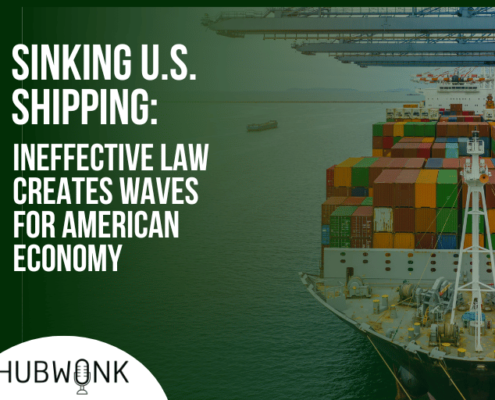
Sinking U.S. Shipping: Ineffective Law Creates Waves for American Economy
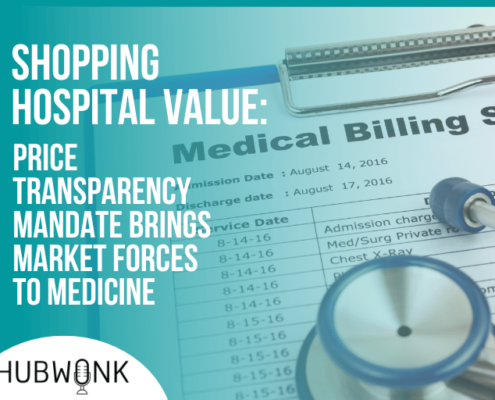
Shopping Hospital Value: Price Transparency Mandate Brings Market Forces to Medicine
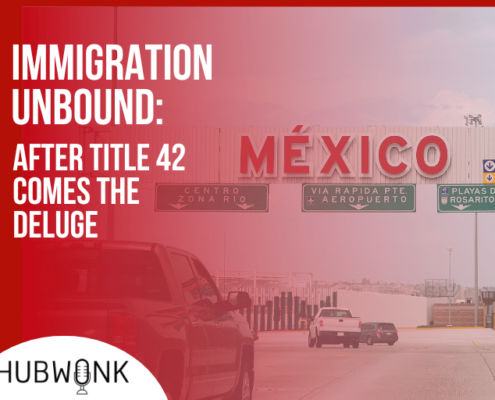
Immigration Unbound: After Title 42 Comes the Deluge
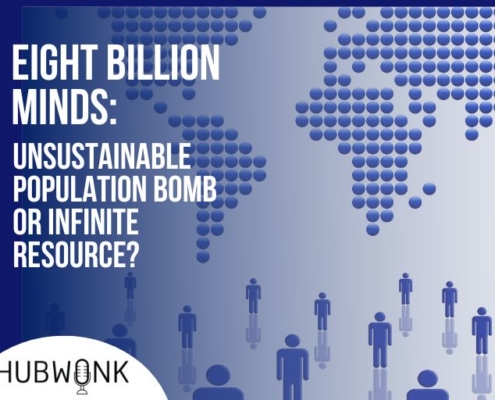
Eight Billion Minds: Unsustainable Population Bomb or Infinite Resource?
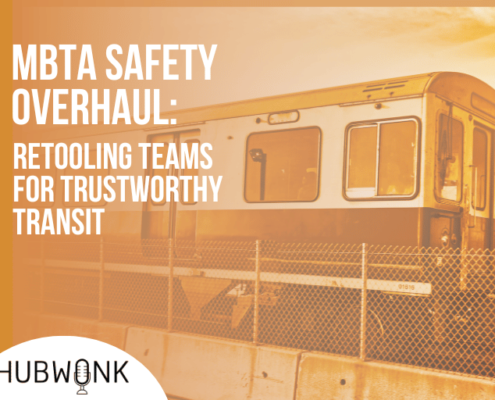
MBTA Safety Overhaul: Retooling Teams For Trustworthy Transit
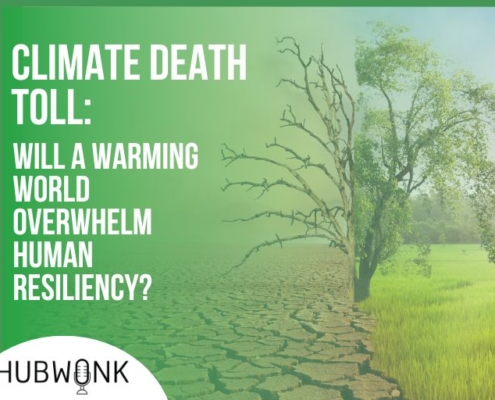
Climate Death Toll: Will A Warming World Overwhelm Human Resiliency?
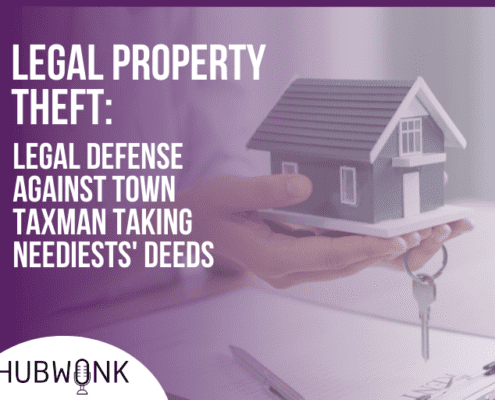
Legal Property Theft: Legal Defense Against Town Taxman Taking Neediests’ Deeds
